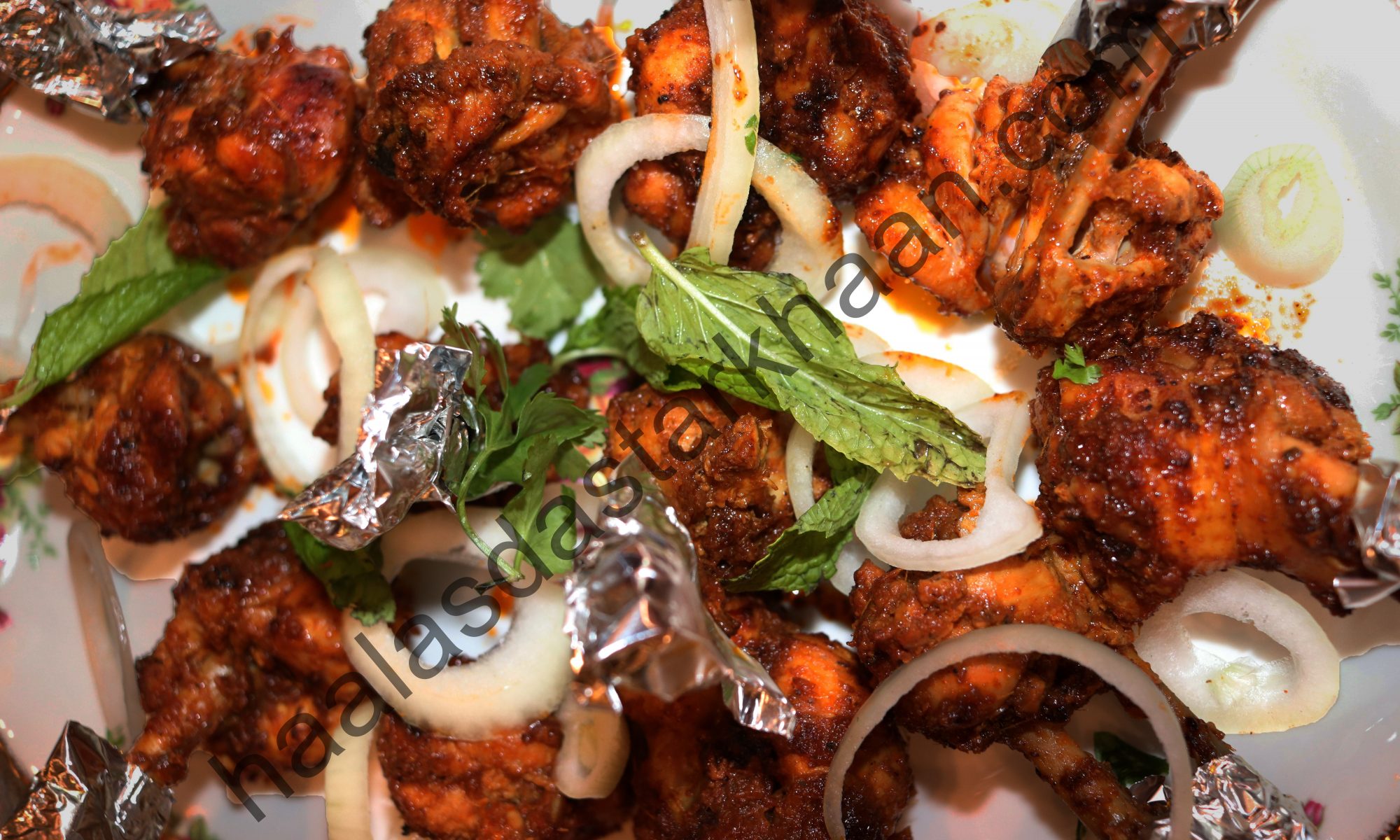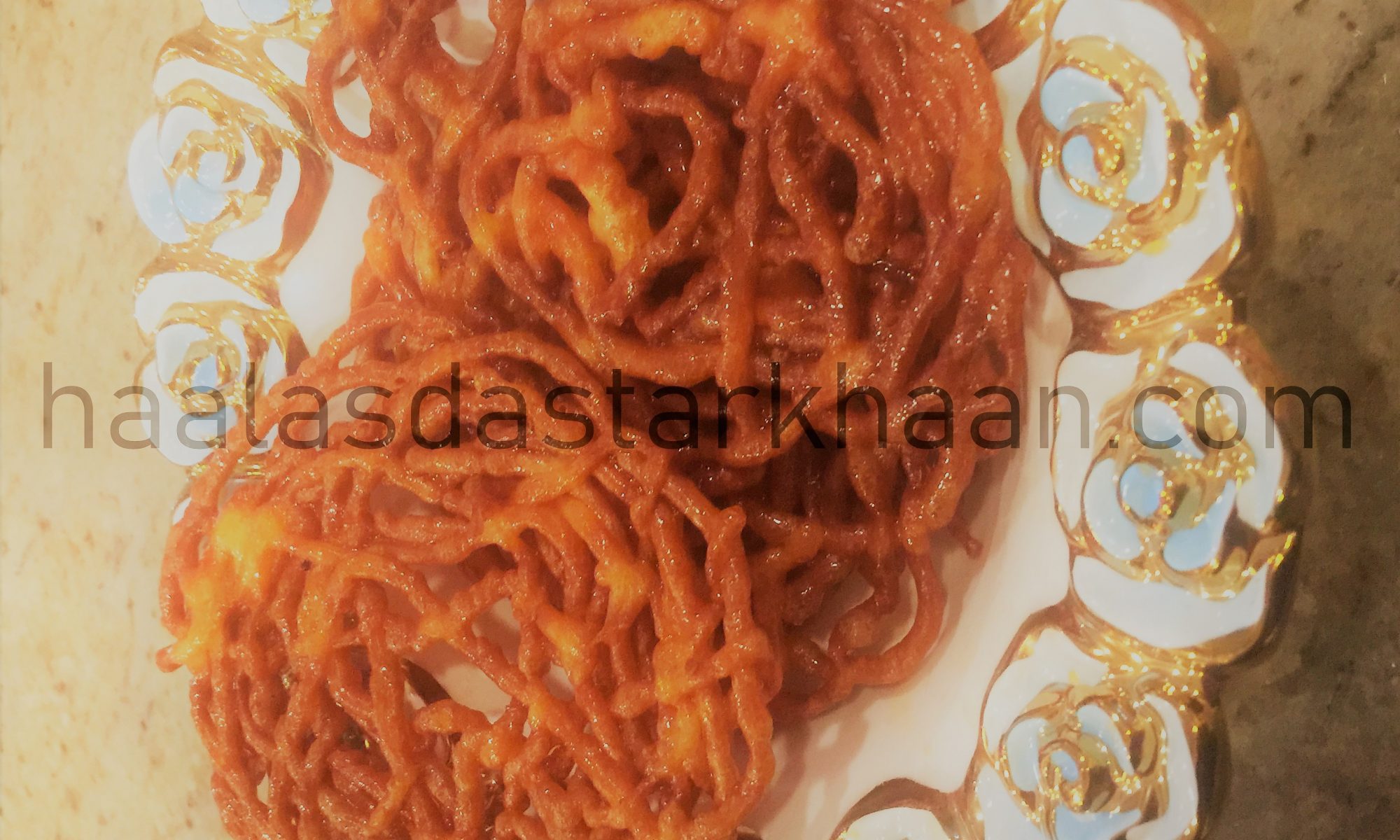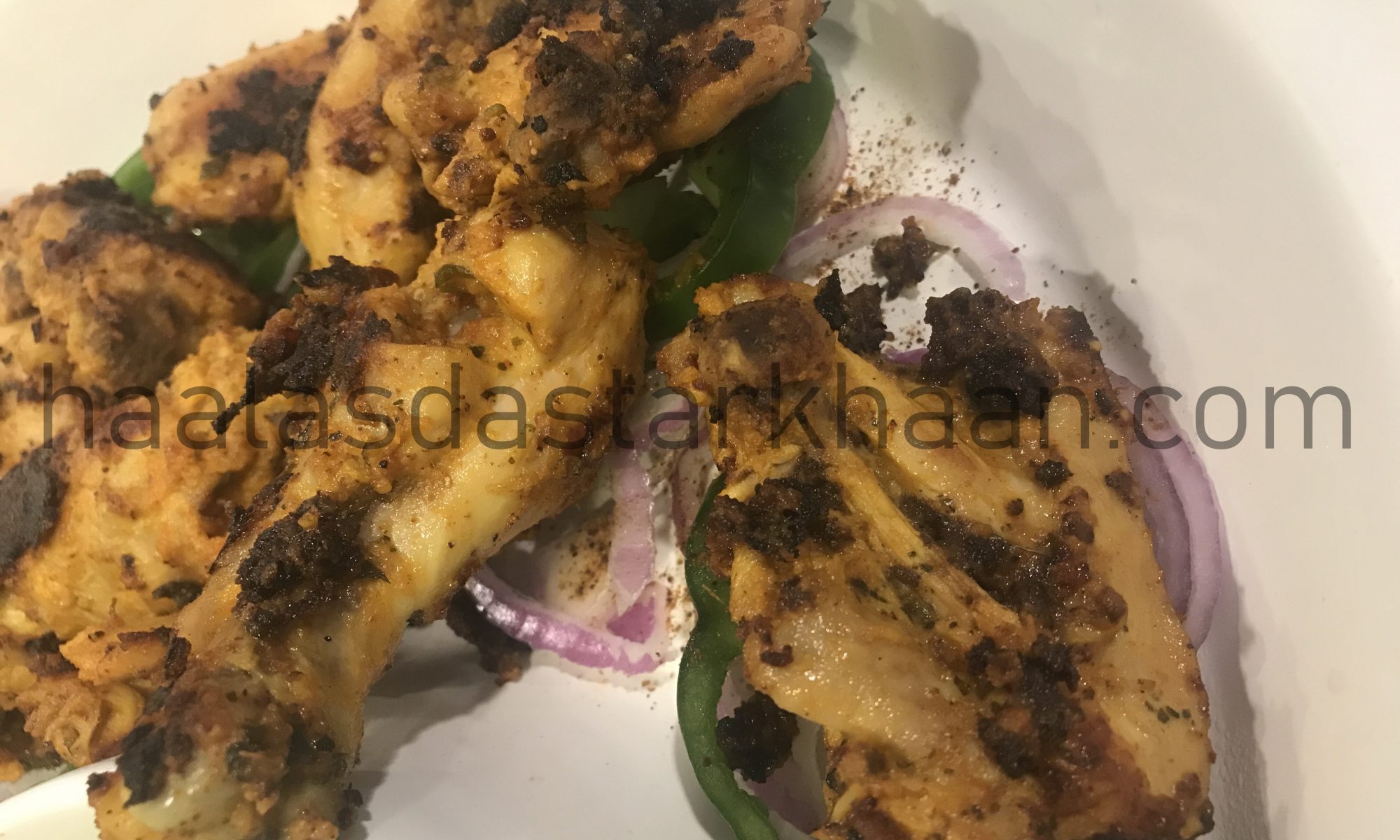Indian word jalebi is derived from the Arabic word zulabiya or the Persian zolbiya, another name for Luqmat al Qadi. This recipe was brought to Medieval India by Persian-speaking Turkish invaders. In 15th century India, jalebi was known as Kundalika or Jalavallika. The versions kept changing and ultimately the Mughals made it “Jalebi”, the way we all enjoy it today.
There is no Indian/ Pakistani/Bangladeshi I met who haven’t shown their love for Jalebis to me. Its heavenly, crispy, sweet and melts your heart. My hometown, Jodhpur makes the best Jalebis in this world. If you don’t believe me, take a trip to the most gorgeous city of Rajasthan, land of the last palace built in India and the land to Rao Jodhana, “Jodhpur”.
Its a funny connection, but Mr. Parveez’s family hails from the Mughals. We would still like to find details of the connection but for now we only are aware that the family are indirectly the descendants of the Mughlia Dynasty. My husband considers himself the rebirth of one of the Mughal rulers and looking at his taste for food and lifestyle choices and the way he treats the guests, I quiet firmly agree to it…LOLzzz. Since he married me and I am from Jodhpur, he always reminds me of how the Mughal rulers had a crush on women from Marwar. We all know about Maharani Jodha, but the Mughal family had another queen from Marwar and that too from my hometown, Jodhpur. The queen to King Jahangir and Mother to King Shah Jahan was from Jodhpur as well.
Vibrant colors of Jodhpur keep you cool and the warmth of the beautiful people melts your heart. The city where Ghee flows like river and a popular joke among people is that people of Jodhpur are always “Ghee Positive”. Coming back to Jalebis, sweets make morning breakfast in Jodhpur. The most popular breakfast is Doodh Jalebi or Doodh Fini.
When Mr. Parveez and I got married, I knew has a sweet tooth and believe it or not, living in Jodhpur, I cannot eat jalebis. It shocks many, including my better half, but I think I just don’t like any sweets that swim in sugar syrup. Anyways, I told Mr. Parveez during our first visit to Jodhpur after marriage that Doodh Jalebi is a popular breakfast. He thought I was just bluffing and smiled as if he did believe me. To his surprise, that was the first breakfast served to him since everyone knew he likes jalebi and my poor husband thought, “Yeah I do like them but only as dessert and not as the main course. I still remember his face and I still can’t stop laughing at his situation.
Anyways, the jalebi were definitely something to die for, or may be not, but definitely something that would make your trip to Jodhpur very sweet. So, those days, I could have never even thought of trying to make Jalebi at home. Years later, living away from home and seeing 3 men looking for the taste of India in pathetic Jalebi made by the Indian sweet stores here, I decided to venture and make my own.
I never have any leftovers when I make these Jalebi and most of the time they finish in a jiffy when they are fresh. So, if you are making them beforehand, I suggest you make extra. Jalebi are best when consumed fresh. These can stay upto a week, if refrigerated and for 2 days on room temperature.


